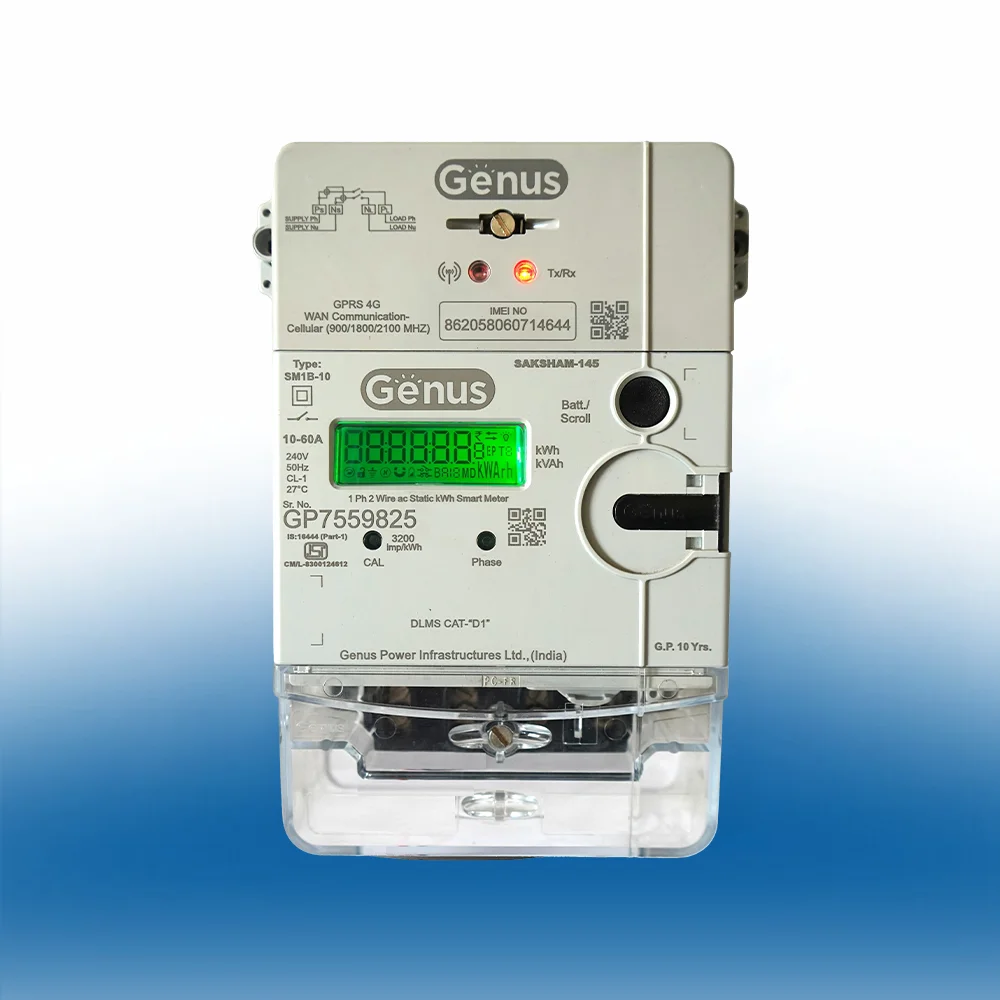SAKSHAM-145 is an ideal solution for Advanced Metering Infrastructure (AMI) system. This meter is designed for robust peak load management and precise power quality measurement, these meters feature advanced multi-rate/time-of-use and anti-tampering functionalities, customized for diverse commercial and residential consumers with three-phase service connections. This meter is capable to communicate using cellular/RF technologies to seamlessly integrate with Head End System (HES) on demand or at predefined time interval. This gives unparalleled end-to-end visibility to the utility into their distribution network.

Smart meters typically transmit data at regular intervals, ranging from a few seconds to an hour, depending on the utility’s preferences and requirements.
SAKSHAM-145 is a single-phase smart meter designed for AMI systems with advanced metering and anti-tampering features.
Yes, the meter is configurable for net metering, forward metering, prepaid, and postpaid modes.
It supports built-in RF/Cellular communication and integrates seamlessly with the Head-End System (HES).
Yes, SAKSHAM-145 supports Over-the-Air (OTA) firmware upgrades.
It logs over-voltage, low-voltage, and power failure events with timestamps.
Yes, it allows remote connection/disconnection and can auto-reconnect when load conditions normalize.
Meter data is secured against manipulation with authenticated billing and time-stamped logs.
The meter stores up to 12 months of billing history.
Yes, users can view consumption details on display or, via an Android application.
The meter has a battery backup to display readings and download data during power outages.